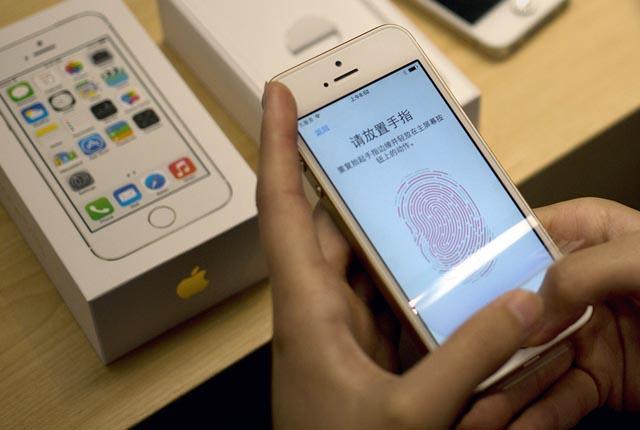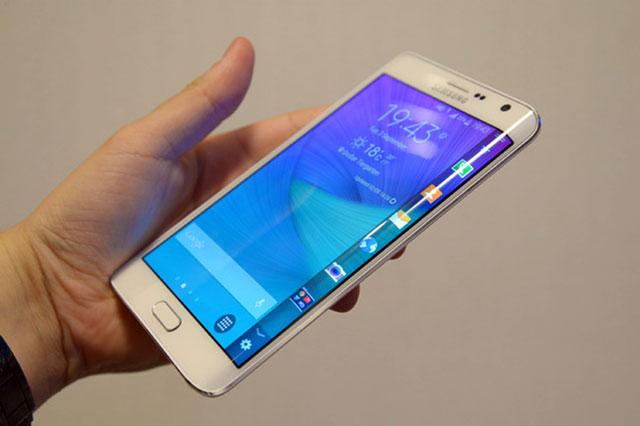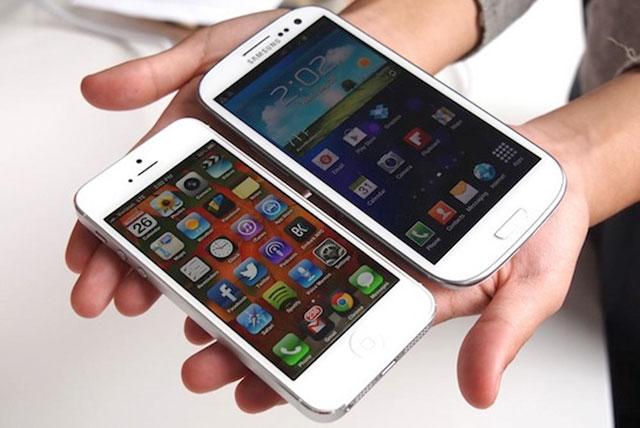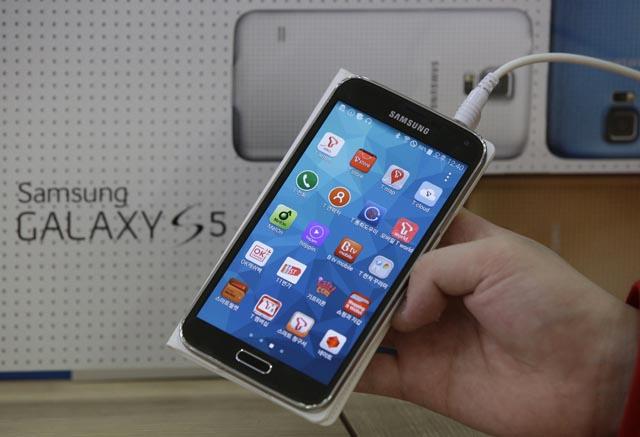You are here
Samsung phone durable, but iPhone has edge — study
By AP - Apr 15,2014 - Last updated at Apr 15,2014

NEW YORK — Samsung’s new Galaxy S5 smartphone is more durable than last year’s model and other leading Android phones, but the iPhone 5S outperformed all of them in part because of its smaller size, a new study finds.
The S5 scored well given its water resistance and a sturdy back panel made of plastic, according to SquareTrade, a provider of extended protection plans. The iPhone 5s won points for being just 4 inches (10 centimetres) diagonally, compared with about 5 inches (12.7cm) for the Android phones. That makes the iPhone easier to grip and thus less likely to slip out of one’s hands.
Nonetheless, all the smartphones tested had a medium risk of breakage, and differences between the various phones weren’t major.
SquareTrade evaluated the phones based on such criteria as size, weight, grip and the quality of the front and back panels. The company measured how far the phones slide when pushed across a table on their backs and how well they withstand drops from four feet (122cm) and being dunked in water for 10 seconds. Robots were used to ensure consistency.
SquareTrade provided The Associated Press with the results ahead of Monday afternoon’s announcement.
The S5 scored a six on a 10-point durability scale, with 10 having the highest risk. The new HTC One phone scored a 6.5, while Google’s Nexus 5 had a seven. The iPhone 5S was at 5.5.
None of those phones is as durable as last year’s Moto X from Motorola. It had a 4.5 rating, thanks to a rounded back molded to the shape of a user’s hand, making it easier to grip. Last year’s HTC One model also had a 4.5.
Last year’s Samsung Galaxy S4, meanwhile, had a score of seven.
The S5, the new HTC One, the Nexus and the iPhone all had strong front panels, despite being made of mostly glass. SquareTrade considered both the materials used and design factors such as button placement to gauge how likely a user would drop the phone while using it. The back panels on the One and the iPhone were moderate, while those on the S5 and the Nexus performed well.
The S5 and the One were the hardest to grip, while the One and the Nexus had poor marks for water resistance — the phones still worked, but had no sound. Both the S5 and the iPhone survived the dunk test, even though only the S5 is officially marketed as water resistant — for up to 30 minutes.
Only the Nexus 5 passed the slide test, but it was the only of the four to fail the drop test.
The Nexus slid 1.7 feet (0.5 metres) when pushed by a robot, compared with 2.5 feet (0.76 metres) or more for the others. The more a phone slides, the greater its chance of falling off the edge of a table. After getting dropped, the Nexus was shattered, while the others had only superficial damage.
SquareTrade said the S5’s performance on the drop test was noteworthy, because the S4 had done poorly.
Related Articles
There was a time you could count on phones getting larger each year. Samsung’s runaway success with the big-screen smartphone even spurred Apple to release a supersized model last fall. But if phones get any bigger will they be too hard to use?
It’s easy to dismiss Apple’s new iPhones as merely catching up to Android.
Many of today’s smartphones share similar features, from responsive touchscreens that let users unlock the phone with a flick of a finger, to pop-up animations that offer a shortcut to dialing a number or storing it in a digital address book.


















